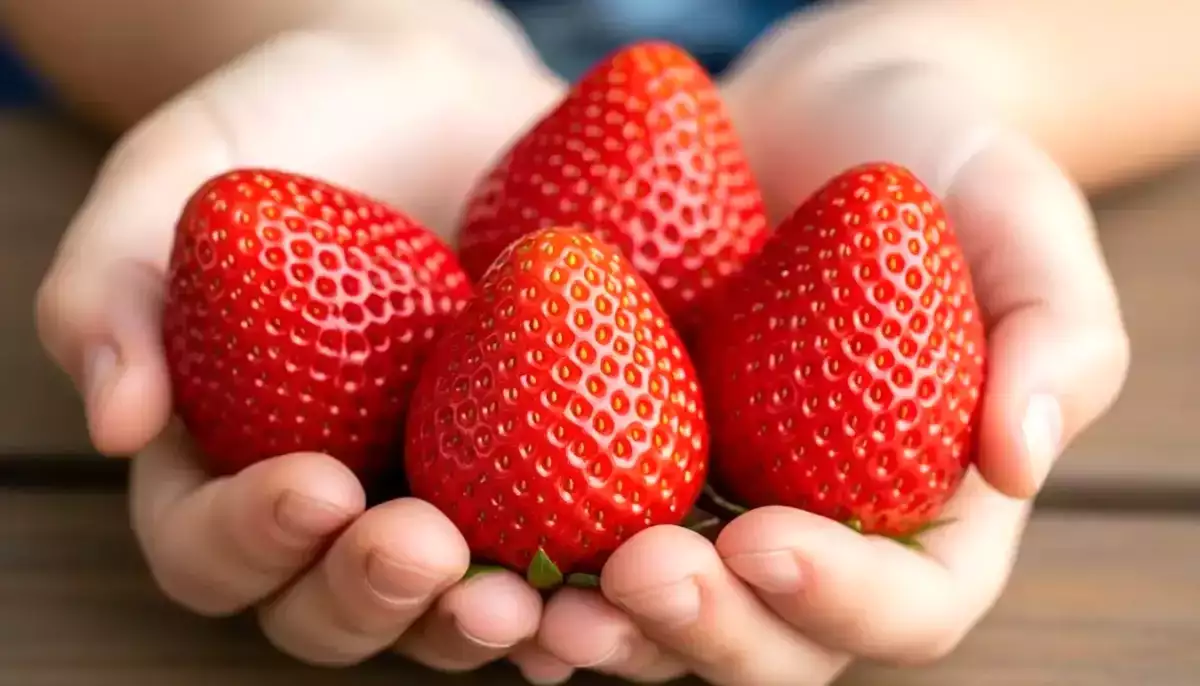Strawberries never cease to surprise: the truth behind their little yellow dots

We think of them as simple, sweet and familiar... and yet strawberries hide a botanical secret that few know.
The return of fine weather also marks the arrival of strawberries on our shelves. Bursting with sunshine, they're the embodiment of spring. But did you know that what you think of as "the strawberry" isn't really a fruit in the scientific sense? And that those little specks on the surface, thought to be anecdotal, are in fact... the real fruit?
What we think of as fruit is only a support: the real fruit lies elsewhere.
At first glance, everything seems obvious: a strawberry is a red, juicy, sweet fruit with tender flesh. But in botany, the strawberry is a "false fruit". What we eat is actually the fleshy receptacle of the flower, a bit like a base. And those little yellow or white seeds that dot its surface? These are the real fruits, called achenes.
Each achene contains a seed and develops independently, like a small autonomous fruit attached to the receptacle. This is what makes the strawberry a polyakene, an improbable but very real word that will delight Scrabble fans and the curious by nature.
A fruit that hides its secrets... and is good for your health
Beyond this botanical curiosity, strawberries are an excellent nutritional choice. Rich in vitamin C, antioxidants (flavonoids) and fiber, it stimulates the immune system, protects cells from oxidative stress and aids digestion. A real health cocktail... as long as you choose them in season.
That's when strawberries reveal their full potential: more intense taste, perfect texture, less pesticides, especially if you choose local producers and organic varieties. Out of season, strawberries often lose their flavor and require more transport... and therefore are less environmentally friendly.
To really enjoy strawberries: make the right choices at the market
A bright red strawberry catches the eye, but it's not an absolute guarantee of taste. Uniformity of color, firmness of flesh and variety are far more telling. Some strawberries are naturally pale, others more tart. Nor is size a reliable criterion: small wild strawberries, for example, explode with flavor.
And then there's freshness: a strawberry picked in the morning, still warm from the sun, has nothing to do with those that have crossed a continent. A simple detour to a local market garden can transform your dessert into a true sensory experience.
When nature comes to the plate, every strawberry becomes a living lesson
The next time you bite into a strawberry, think of the hundreds of tiny achenes you swallow without paying attention. You'll discover that, beyond being a delicacy, each bite is a plunge into the complexity and intelligence of nature.
And that's where the real pleasure lies: when science enlightens our plates, even the most familiar fruits become sources of amazement.
 Vincent Sabourdy
Vincent SabourdyI make the best crêpes on the street.
I love accessible recipes, practical advice, and culinary news.
My goal: to offer the best possible culinary website to make cooking a pleasant and shared experience.
Comments